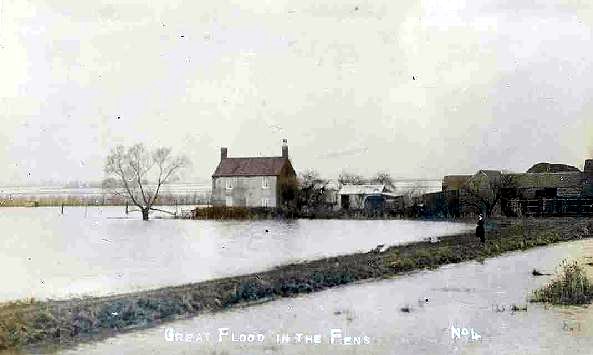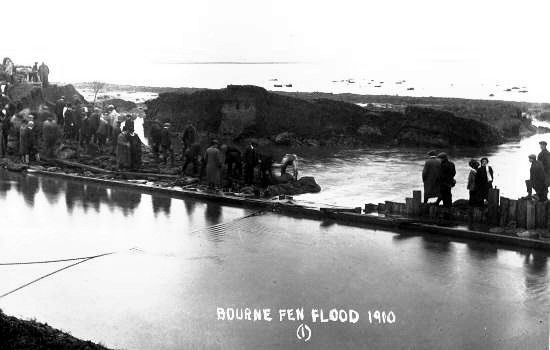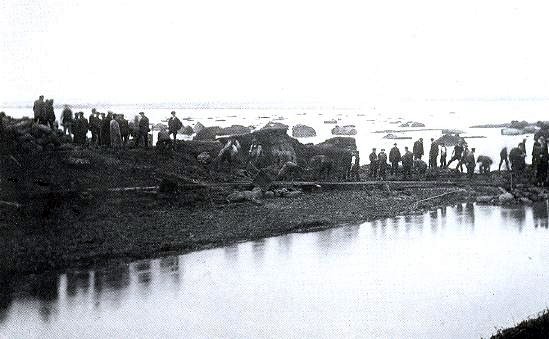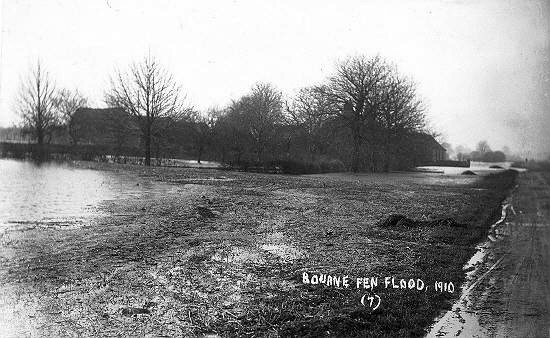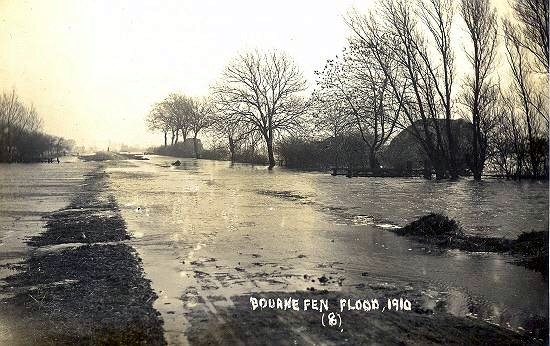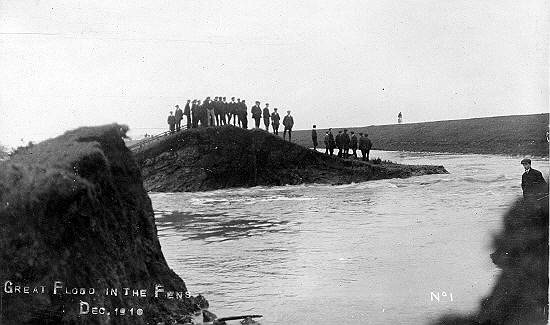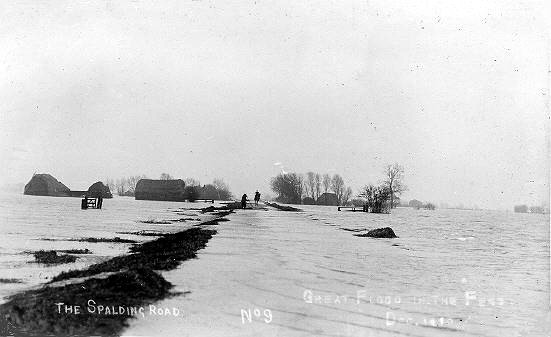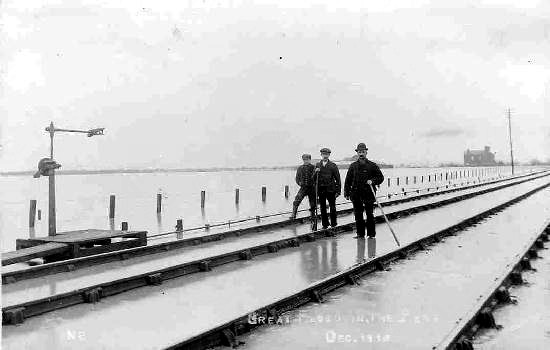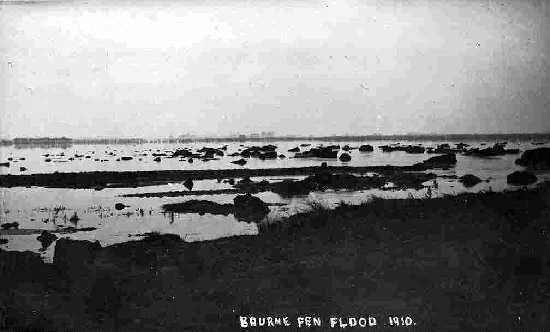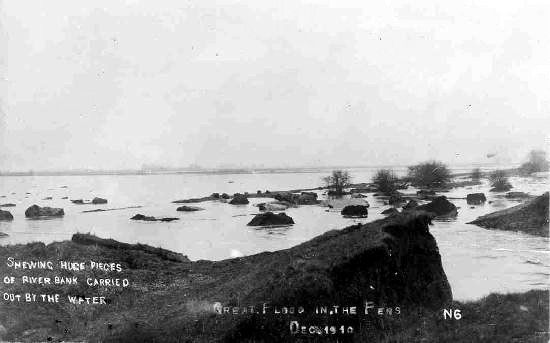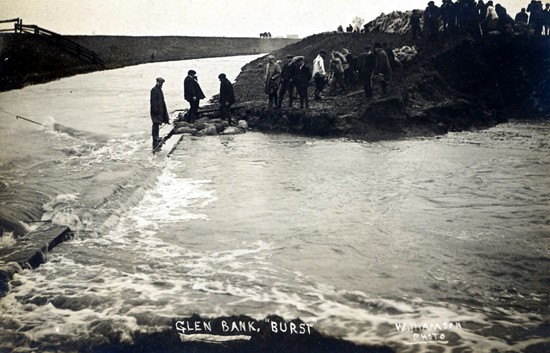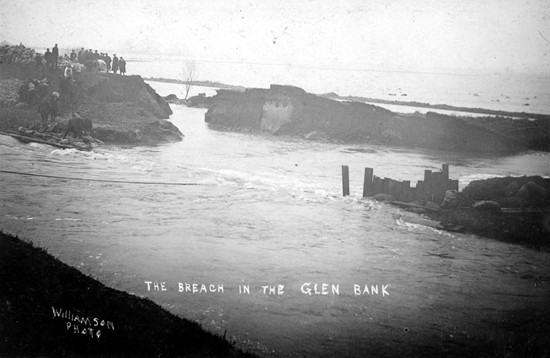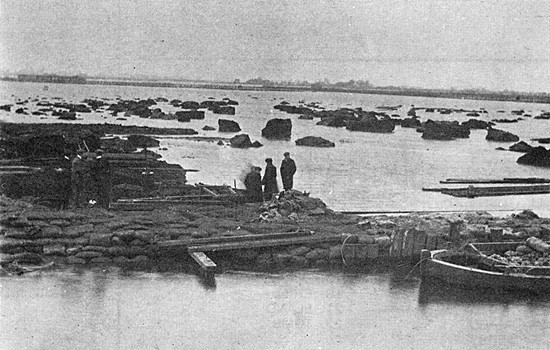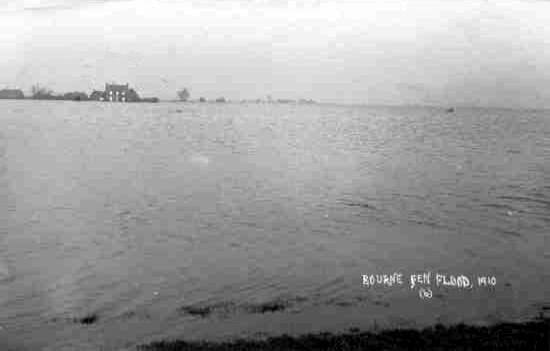|
The Great Flood of 1910 A PICTORIAL RECORD PHOTOGRAPHED
Flooding in the fens continued into the 20th century and in the late summer of 1908, continual rain over a period of weeks held up the corn harvest and two years later, in the winter of 1910, the River Glen again burst its banks at Tongue End, inundating the South Fen near Bourne and covering the main Spalding road towards Twenty with flood water. This disaster, occurring during the first week of December 1910, was probably the worst in the history of Bourne and subsequently became known as "the Great Flood". For more than a month, the entire fen was one vast sea of floodwater and emergency repairs mounted by the Black Sluice Commissioners continued day and night. Attempts were made to repair the damage and the picture below from a postcard published at the time shows workers trying to fill the breached bank with sandbags but despite labouring for long hours, they had little success and farmers were forced to wait until the water subsided naturally but it was four weeks before it drained away and a complete picture of the damage caused emerged. On 12th January 1911, farmers and landowners gathered at the Corn Exchange in Bourne to assess the damage and to set up a distress fund for those affected. Before the meeting were compensation claims from farmers tenanting 1,500 acres of land totalling £3,000 although the final figure was expected to be between £8,000 and £9,000. Subscriptions to the fund began immediately with £100 from the Earl of Ancaster and other amounts ranging from £50 to 2s. 6d. from wealthy farmers, businessmen and ordinary people in the locality and a committee was set up to handle the distribution of grants to the more deserving cases. The Marquess of Exeter, one of the principal landowners, returned half a year's rent to each of his tenants while the Rev Alan Galton, Vicar of Edenham, offered to take a collection. Other churches and chapels in the district were urged to do the same and in the weeks that followed, events such as concerts and whist drives were arranged to add to the fund. The relief work continued for several months but it was to be more than a year before the land returned to its usual productivity and many of the smaller farmers never recovered from the financial loss they had suffered. MORE PICTURES OF THE GREAT FLOOD OF 1910
Go to: Main Index Villages Index
|
